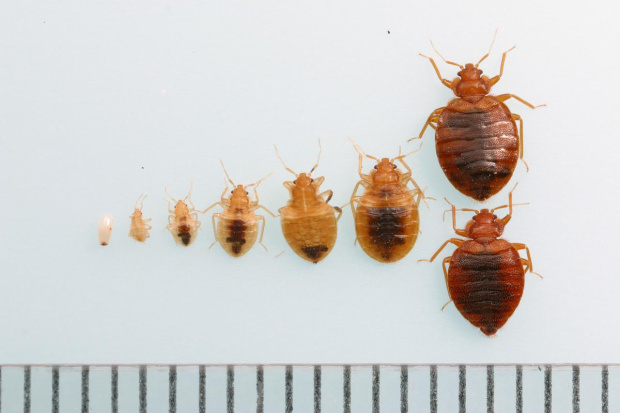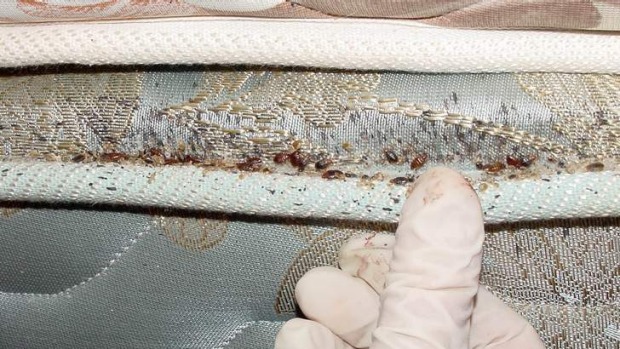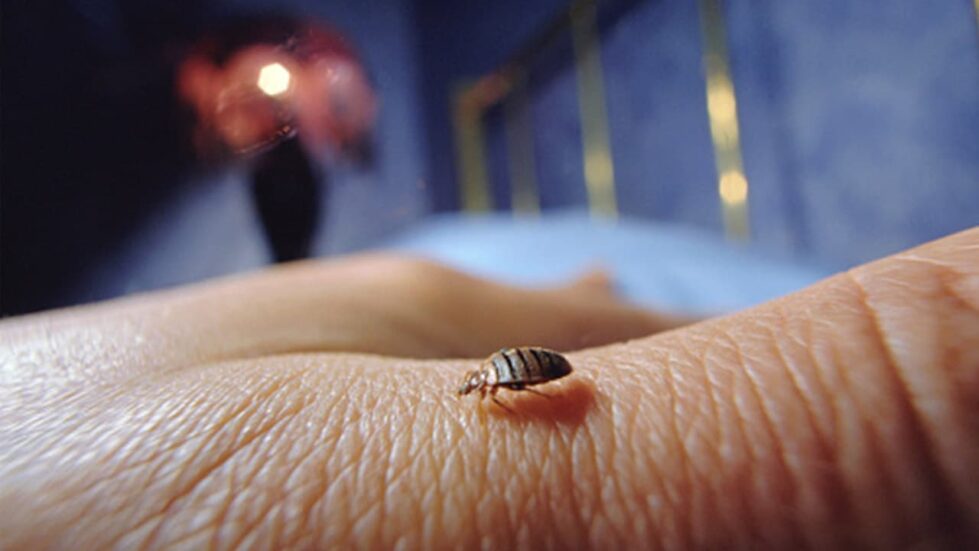Are you concerned that your home or hotel room bed may have bed bugs? Here’s how to check for bed bugs, determine if you have bed bugs and get rid of bed bugs fast.
Signs of a Bed Bug Infestation
Anyone worried about bed bugs may be trying to figure out how to spot them, treat bed bug bites and get rid of them for good. Finding out if you have bed bugs in your house is easier if you are familiar with their habitat. Continue reading to learn how to spot bed bugs and what you can do to get rid of them quickly.
How to Check for Bed Bugs
Clusters of bedbugs can be found close to where their human hosts sleep. These swarms of bed bugs are made up of individuals in various stages of development (from eggs to fully grown adults). As a result, bed bug swarms can come in all shapes and sizes. There are a lot of exoskeletons (bed bug shells), feces, and egg-castings in these areas.
Bed bugs can gather in large numbers for a variety of reasons. Antennal activation, chemical stimuli, and microclimate variables like temperature, humidity, and light can all be part of the mix. When clusters appear, it’s usually because they’re hiding in inconspicuous places like the wood framing around a closet door or in indentations caused by chipped paint.
In the early stages of a bed bug infestation, it can be difficult to tell if you have bed bugs. Despite the widespread presence of bed bugs, many people have no idea what they look like. It’s possible to spot bed bugs at any stage of development by keeping an eye out for specific characteristics and learning about their life cycle.
As soon as nymphs hatch from bed bug eggs, they begin searching for blood. In as little as six days, an egg can hatch. Each time a nymph molts its exoskeleton, it must eat before the process can begin again.

Three or more generations of bed bugs may be present in a single bed bug infestation. Some people have no reaction at all when bitten by bed bugs, while others mistakenly believe they have been bitten by a mosquito or another insect. Because of this, an infestation can often go undetected for long periods of time. If you’re concerned you have a bed bug problem, call us today for an inspection!
Have a bed bug problem?
Detecting the Presence of Bed Bugs
During the day, adult bedbugs can be spotted without the use of any special equipment. When looking for bed bugs, begin in the bedroom. As a general rule, bedbugs prefer to gather near where their host (the human) sleeps, and this is where the aggregations begin to form.
Here are some places to look in your bedroom for signs of bedbugs:
- Headboards
- Tables for the bedside
- Wall/ceiling intersections
- Wallpaper or paneling that has been torn away.
- Baseboards near beds
- Mattress seams, and personal belongings all have crevices close to where people sleep.
Make sure to keep in mind that bedbugs are active at nighttime. A little bit of luck and some perseverance are required when trying to find bed bugs during the day.

Finding Signs of Bed Bugs
Bed bugs prefer to live in mattresses and box springs. The reason for this is that their primary source of food is humans, and they tend to congregate in areas where people spend a lot of time sitting or lying down. This is why it’s very important to check your hotel room mattress for bed bugs before getting settled in. The last thing you want is to bring bed bugs home with you.
Remove the sheets from your bed and inspect the edges, crevices, and piping of your mattress for signs of bed bugs. Bedbugs are flat, almond-shaped, reddish-brown, and extremely small by appearance. Check the box spring for bedbugs of all ages and stages, from eggs to adults.
An apple seed’s worth of adult bed bugs can be found in your home (approximately five millimeters). A blood meal causes them to swell like balloons. They are a reddish-brown color, wingless, and flat. People’s skin takes days to return to its normal hue after that happens.
How to Detect Bed Bugs in your Home
Bedbugs are clever enough to hide, but not clever enough to clean up their mess. Because secondary signs of bed bug infestation are visible at any time of day or night, they are often the best indicator that your room has been infested. During the daytime, look for the following:
- Exoskeletons and shells of bed bugs
- Bed bug spores
- Fecal stains on your bedding and mattress
- Pajamas and sheets are stained with blood.
Bed Bug Bite Identification
Unfortunately, the bed bug’s bite isn’t the best way to tell if you have a problem with bed bugs. A bed bug infestation may not always be detected by the presence of bites on the skin. If you look closely, bites from bedbugs can resemble those of other insects (such as mosquitoes or chiggers) or even rashes (such as those caused by eczema or fungus). In addition, some people do not react at all to bed bug bites.
Even so, keeping an eye out for the following telltale signs and symptoms of a bed bug bite can help you make the connection.
- Red, raised welts
- Inflamed and itchy
- A localized rash caused by bed bug bites.
- Multiple bites arranged in a straight line
- Bed bug bites: how to treat them
- A dermatologist is recommended if you have more than one bite, blisters, oozing pus, or any other sign of a severe allergic reaction or infection. Alternatively, they recommend washing the bites with soap and water to treat bed bug bites. This will help prevent a skin infection and ease the itching associated with it. Corticosteroid cream can relieve itching if the bites are severe enough.
How to Get Rid of Bed Bugs from Your Home
Once the infestation is confirmed, remember that the main goal is to get rid of it as quickly as possible. Unfortunately, getting rid of bedbugs is extremely difficult. Once an infestation has been established, a professional bed bug exterminator will need to use a variety of methods to completely remove them from your home. As a result, it’s imperative that you hire a bed bug removal expert in bed bug control to inspect your home and recommend the best treatment options. If your home or hotel has a bed bug problem, don’t wait! Contact our pest control team or give us a call today!

